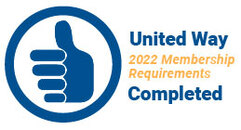|
Recently a local agency experienced the realities and difficulties of initiating treatment for opioid addiction. I want to share this journey with you.
At 11:00 on a Thursday morning, the agency received a call from a man who needed transportation to a Detox center in Indianapolis. He had been involved in using prescription opioid drugs. He had been through rehab in the past. He had burned all the bridges with his family. He had no insurance. He had no car or driver’s license. On his own, he contacted a treatment center in Indianapolis, negotiated the price for admission, and arranged a bed if he could get there by 7:00 pm that night. I hope you are noticing the complexity of the details. This man was ready to initiate treatment. This is huge. Until a drug user is willing to accept help, it is unlikely that treatment will work. This is the frustration of many of the agencies who deal with people struggling with drug use and addiction as well as family members. They can offer programs, the courts can order attendance in programs, but until the person is willing to engage, it does little good. There is a very small window of time where someone involved in drug use is willing to accept treatment. This man was ready and willing. He found a treatment center that had an open bed. Local EMTs tell heartbreaking stories of going on a call for an overdose, dealing with the immediate situation and the person begging them to help get into treatment. Conservative estimates indicate there is a need for 66,000 beds for drug treatment in Indiana. Currently there are less than 2,000. (Larry Blue, President of Indiana Association Recovery Residences, Indiana Rural Development presentation, August 2, 2018.) When you consider the narrow time frame when someone is willing to initiate treatment with the likelihood of there being an open bed, you get a sense of the intensity of the problem. He had been in rehab before. His family was no longer willing to provide assistance he needed. Addiction is a chronic brain disease with multiple relapses. Statistics show that on average, a person involved in substance abuse will go to rehab/treatment multiple times before sustaining long term recovery. (https://americanaddictioncenters.org/the-addiction-cycle) He had no insurance. Treatment for drug use is expensive. Medicaid and private insurance are beginning to pay for drug treatment, but many who use drugs are not aware of this or don’t know how to sign up. Without insurance or Medicaid, many treatment centers require cash upfront to walk in the door. In this case, the agency found outside funding for the initial payment of $250 for detox. He had no transportation. Even though he was able find a treatment site with an open bed and arrange for payment, he had no way to get there. He was in rural White County and the treatment center was seventy miles away. Local transportation covered his journey into Monticello and a volunteer drove him to Lafayette. Eventually a 211 LYFT driver was located and able to transport him to the treatment center. The entire process took two people five hours and more than thirty phone calls to locate funding and arrange transportation. The system can be daunting to those who need services. With the help of a local agency familiar with available resources, the ability to navigate the system, and the persistence to pursue all avenues, this individual was able to initiate treatment. Many are not this fortunate. 583 words
0 Comments
Your comment will be posted after it is approved.
Leave a Reply. |
AuthorLynn Saylor is the AmeriCorps member working with the United Against Opioid Abuse Initiative alongside the White County United Way. She is a major facilitator of the United Council on Opioids serving White County and a regular contributor to local media. Archives
October 2020
Categories
All
|

 RSS Feed
RSS Feed
